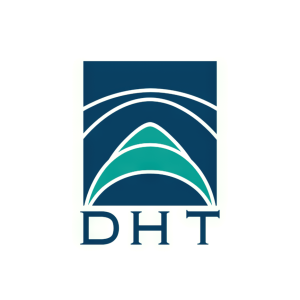DHT Holdings, Inc. Business Update
- None.
- None.
Insights
The reported time charter equivalent earnings of $50,900 per day for DHT Holdings' fleet, particularly the VLCCs, present an intriguing data point for market analysts. The differentiation between earnings from the spot market and time-charter provides insight into the company's revenue diversification and risk management strategies. Spot market earnings tend to be more volatile, reflecting the immediate supply and demand dynamics, while time-charter rates are usually fixed over a period and offer stability.
Assessing the performance against industry benchmarks, one could infer that the average daily earnings, especially in the spot market, may indicate the company's competitive positioning and operational efficiency. The booking of 42% of available spot days at a higher rate in the second quarter signals a potential uptick in demand or strategic pricing maneuvers. The aggregate booking rate for the second quarter also suggests a robust forward-looking earning potential, which could be of interest to stakeholders monitoring the company's quarter-over-quarter performance.
From a financial perspective, the disclosed figures translate into a significant stream of revenue for DHT Holdings. The revenue days metric, representing the total number of days vessels were available for earning revenue, is key for understanding the utilization rate of the fleet. A high number of revenue days, particularly in the spot market, implies efficient asset use and can be a positive indicator for investors.
Investors should also note that the advance booking of over half the available revenue days at a substantial rate indicates a strong forward revenue visibility. This could impact the company's stock price as it reflects investor confidence in the company's ability to secure and maintain profitable contracts. However, investors should also consider the inherent risks of the shipping industry, such as fluctuating oil prices, geopolitical tensions and regulatory changes, which can all affect charter rates and occupancy levels.
An economist might view the reported earnings in the context of the broader economic environment. The VLCC (Very Large Crude Carrier) market is closely tied to global economic activity and trade flows. High daily earnings can be indicative of strong global oil demand and trade, which in turn might be a sign of a robust economic landscape. Conversely, it could also point to a tight supply in shipping capacity, leading to higher charter rates.
The fact that DHT Holdings has secured a significant portion of its second quarter's revenue days at favorable rates could be interpreted as a microeconomic indicator of sector strength. However, it is essential to consider the cyclical nature of the shipping industry and the potential for rapid changes in the economic climate which can swiftly alter the demand for shipping services.
HAMILTON, BERMUDA, April 11, 2024 – DHT Holdings, Inc. (NYSE:DHT) (“DHT” or the “Company”) today provides the following business update:
For the first quarter of 2024, the Company estimates time charter equivalent earnings for its fleet at
Thus far in the second quarter of 2024,
About DHT Holdings, Inc.
DHT is an independent crude oil tanker company. Our fleet trades internationally and consists of crude oil tankers in the VLCC segment. We operate through our integrated management companies in Monaco, Norway, Singapore, and India. You may recognize us by our renowned business approach as an experienced organization with focus on first rate operations and customer service; our quality ships; our prudent capital structure that promotes staying power through the business cycles; our combination of market exposure and fixed income contracts for our fleet; our counter cyclical philosophy with respect to investments, employment of our fleet, and capital allocation; and our transparent corporate structure maintaining a high level of integrity and good governance. For further information please visit .
Forward Looking Statements
This press release contains certain forward-looking statements and information relating to the Company that are based on beliefs of the Company’s management as well as assumptions, expectations, projections, intentions and beliefs about future events. When used in this document, words such as “believe,” “intend,” “anticipate,” “estimate,” “project,” “forecast,” “plan,” “potential,” “will,” “may,” “should” and “expect” and similar expressions are intended to identify forward-looking statements but are not the exclusive means of identifying such statements. These statements reflect the Company’s current views with respect to future events and are based on assumptions and subject to risks and uncertainties. Given these uncertainties, you should not place undue reliance on these forward-looking statements. These forward-looking statements represent the Company’s estimates and assumptions only as of the date of this press release and are not intended to give any assurance as to future results. For a detailed discussion of the risk factors that might cause future results to differ, please refer to the Company’s Annual Report on Form 20-F, filed with the SEC on March 20, 2024.
The Company undertakes no obligation to publicly update or revise any forward-looking statements contained in this press release, whether as a result of new information, future events or otherwise, except as required by law. In light of these risks, uncertainties and assumptions, the forward-looking events discussed in this press release might not occur, and the Company’s actual results could differ materially from those anticipated in these forward-looking statements.
Contact:
Laila C. Halvorsen, CFO
Phone: +1 441 295 1422 and +47 984 39 935
E-mail: lch@dhtankers.com

FAQ
What are the estimated time charter equivalent earnings for DHT Holdings, Inc. in the first quarter of 2024?
How much do the Company's VLCCs operating in the spot market earn per day?
What is the average daily rate for the Company's VLCCs on time-charter in the first quarter of 2024?
What percentage of spot days have been booked in the second quarter of 2024?
At what average rate have the available spot days been booked in the second quarter of 2024?
What percentage of revenue days have been booked in the second quarter of 2024?







